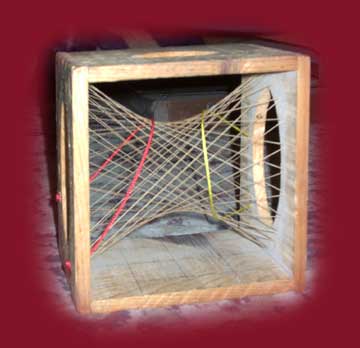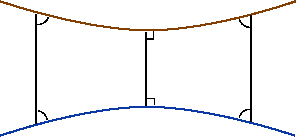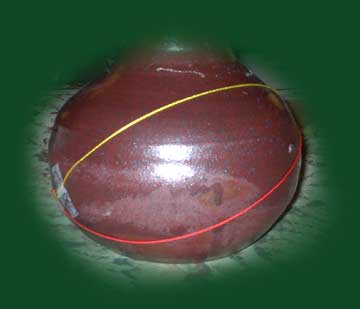

A geodesic can be rougly described as a path of shortest distance between two points. Geodesics on surfaces can be represented by taut strings as shown in the photographs below. Three types of surfaces (distinguished by whether their Gaussian curvature is negative, zero or positive) are shown, and the behaviour of geodesics is contrasted in each case.
 |
A negatively curved surface appears (to an ant on the surface) like a mountain pass or saddle: one sees the surface veer upwards on the left and right, but downwards to the front and back. Geodesics on a negatively curved surface tend to veer apart from each other. Two non-intersecting geodesics are shown. Note that the geodesics have a common perpendicular, representing the shortest distance between points of the two geodesics. |
 |
 |
A surface of zero Gaussian curvature (such as the cylinder shown) has the property that regions on the surface may be represented by planar maps which perfectly represent both distances (with a scale factor) and angles. Geodesics on a surface of zero curvature behave just as in a plane; either they intersect (as do lines in a plane) or they are parallel, as shown. Note that parallel geodesics stay the same distance apart along their entire length; the distance separating them is represented by any of the infinitely many common perpendiculars. |
 |
 |
A surface of positive curvature appears (to an ant on the surface) to be bowl-shaped: at every point of the surface it appears to be either a hilltop or the bottom of a bowl, depending on which side of the surface one stands. Geodesics on a positively curved surface tend to veer towards each other as one moves away from their common perpendicular, which joins the curves at their point of greatest separation. |
 |